
Surrealism - IV
Frida Kahlo
1907 – 1954

Frida Kahlo in 1926. She is just 18 years old.
Frida Kahlo
Magdalena Carmen Frida Kahlo y Calderón (6 July 1907 – 13 July 1954) was a Mexican painter known for her many portraits, self-portraits, and works inspired by the nature and artifacts of Mexico. Inspired by the country's popular culture, she employed a naïve folk art style to explore questions of identity, postcolonialism, gender, class, and race in Mexican society. Her paintings often had strong autobiographical elements and mixed realism with fantasy. In addition to belonging to the post-revolutionary Mexicayotl movement, which sought to define a Mexican identity, Kahlo has been described as a surrealist or magical realist. She is also known for painting about her experience of chronic pain.
Born to a German father and a mestiza mother, Kahlo spent most of her childhood and adult life at La Casa Azul, her family home in Coyoacán – now publicly accessible as the Frida Kahlo Museum. Although she was disabled by polio as a child, Kahlo had been a promising student headed for medical school until being injured in a bus accident at the age of 18, which caused her lifelong pain and medical problems. During her recovery, she returned to her childhood interest in art with the idea of becoming an artist.
Kahlo's interests in politics and art led her to join the Mexican Communist Party in 1927, through which she met fellow Mexican artist Diego Rivera. The couple married in 1929 and spent the late 1920s and early 1930s travelling in Mexico and the United States together. During this time, she developed her artistic style, drawing her main inspiration from Mexican folk culture, and painted mostly small self-portraits that mixed elements from pre-Columbian and Catholic beliefs. Her paintings raised the interest of Surrealist artist André Breton, who arranged for Kahlo's first solo exhibition at the Julien Levy Gallery in New York in 1938; the exhibition was a success and was followed by another in Paris in 1939. While the French exhibition was less successful, the Louvre purchased a painting from Kahlo, The Frame, making her the first Mexican artist to be featured in their collection. Throughout the 1940s, Kahlo participated in exhibitions in Mexico and the United States and worked as an art teacher. She taught at the Escuela Nacional de Pintura, Escultura y Grabado ("La Esmeralda") and was a founding member of the Seminario de Cultura Mexicana. Kahlo's always-fragile health began to decline in the same decade. She had her first solo exhibition in Mexico in 1953, shortly before her death in 1954 at the age of 47.

Frida Kahlo. Frieda and Diego Rivera
1931

Diego Rivera and Frida Kaloch
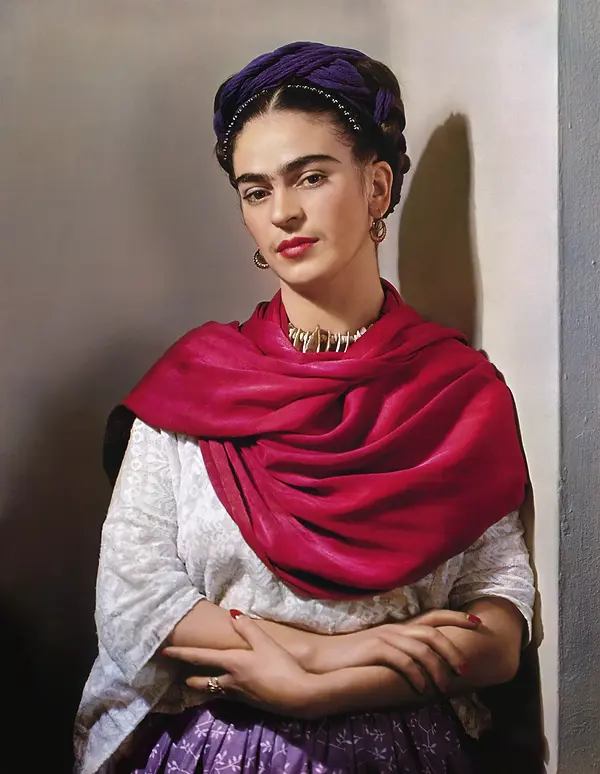
Frida Kahlo

Frida Kahlo Henry Ford Hospital (The Flying Bed)
1932

Frida Kahlo

Frida Kahlo My Birth
1932
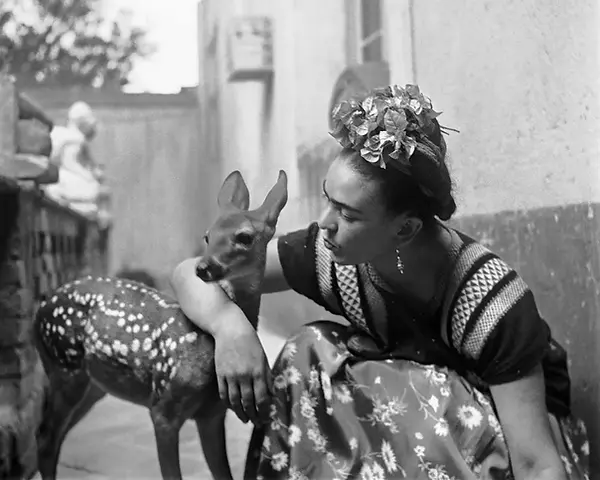
Frida Kahlo

Frida Kahlo A Few Small Nips (Passionately in Love)
1935

Frida Kahlo

Frida Kahlo My Nurse and I
1937
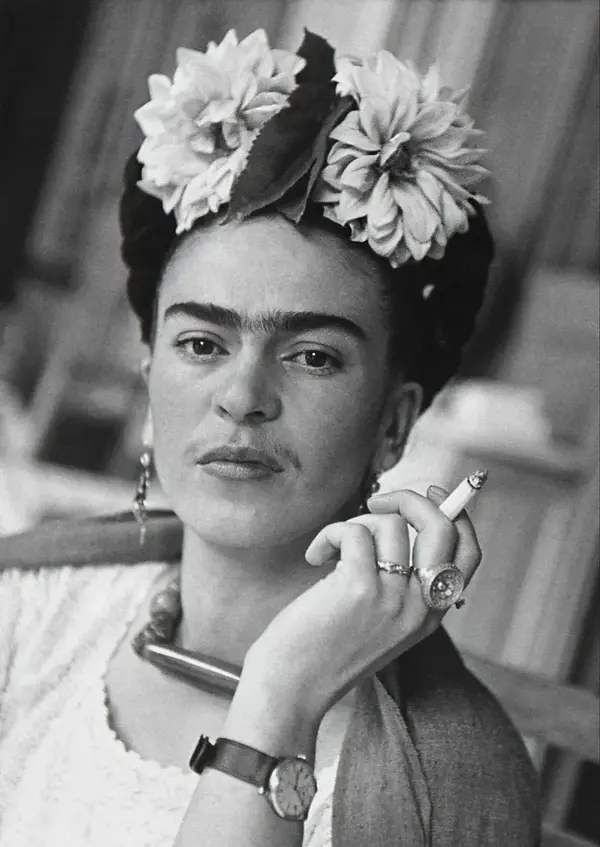
Frida Kahlo

Frida Kahlo The Suicide of Dorothy Hale
1938

Frida Kahlo
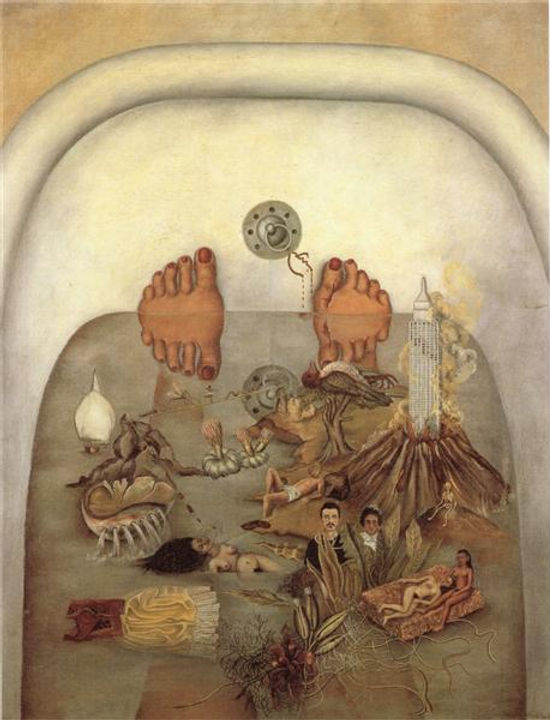
Frida Kahlo What the Water Gave Me
1938
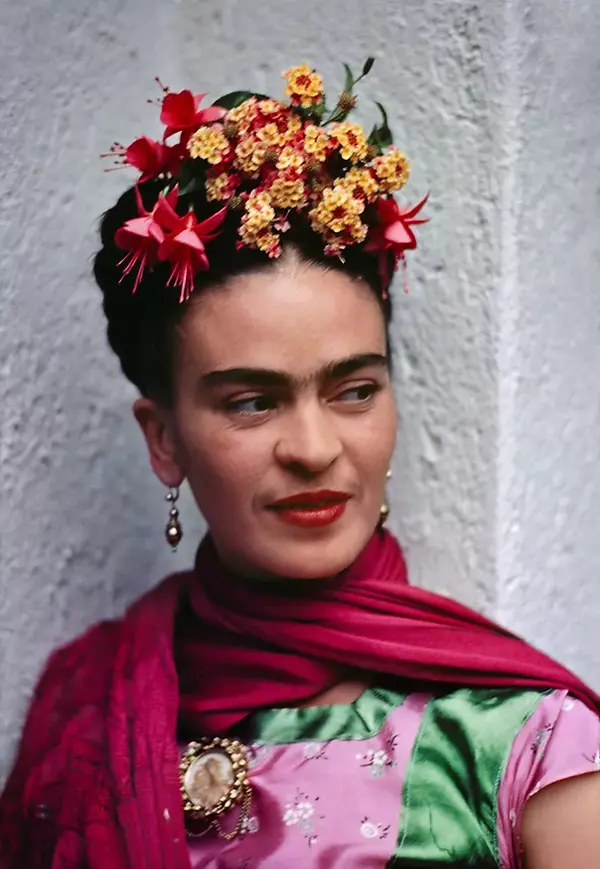
Frida Kahlo

Frida Kahlo The Two Fridas
1939

Frida Kahlo

Frida Kahlo Two Nudes in the Forest (The Earth Itself)
1939

Frida Kahlo

Frida Kahlo Self Portrait with Necklace of Thorns
1940

Frida Kahlo

Frida Kahlo. Self Portrait with Cropped Hair
1940
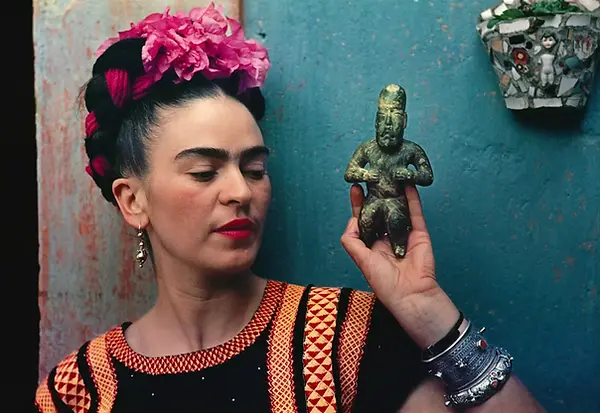
Frida Kahlo

Frida Kahlo The Dream (The Bed)
1940

Frida Kahlo

Frida Kahlo. Roots
1943
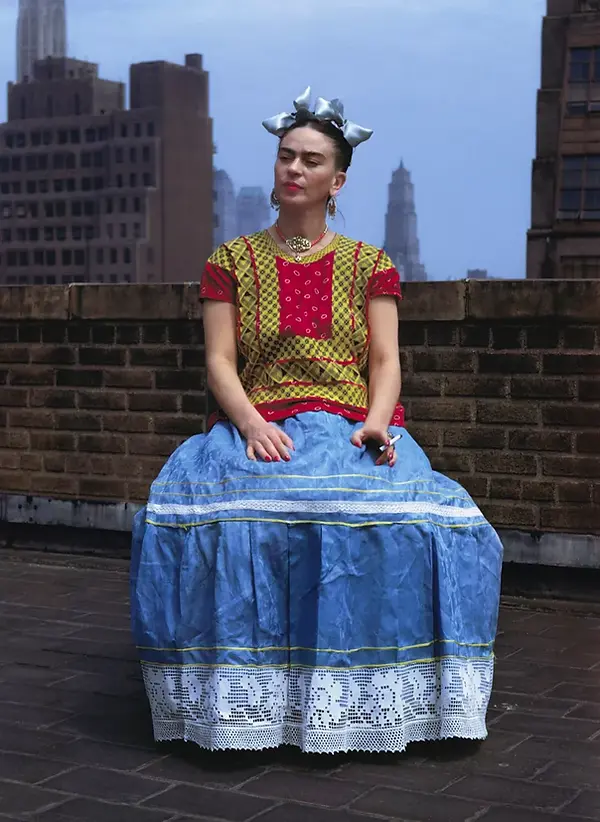
Frida Kahlo

Frida Kahlo The Broken Column
1944

Frida Kahlo

Moses Frida Kahlo 1945

Frida Kahlo

Frida Kahlo Without Hope
1945

Frida Kahlo

Frida Kahlo The Wounded Deer
1946

Frida Kahlo

Frida Kahlo Tree of Hope, Remain Strong
1946

Frida Kahlo

The Love Embrace of the Universe, the Earth (Mexico), Myself, Diego and Señor Xólotl
Frida Kahlo
1949

Frida Kahlo

Frida Kahlo
Diego and I
1949

MEXICO-DAY OF THE DEAD-FRIDA KAHLO
Lola Álvarez Bravo
(3 April 1903 – 31 July 1993) was the first Mexican female photographer and a key figure in the post-revolution Mexican renaissance. Known for her high level of skill in composition, her works were seen by her peers as fine art. She was recognized in 1964 with the Premio José Clemente Orozco (José Clemente Orozco Prize), by the State of Jalisco, for her contributions to photography and her efforts to preserve the culture of Mexico. Her works are included in the permanent collections of international museums, including the Museum of Modern Art in New York City.

Lola Álvarez Bravo

Lola Álvarez Bravo
Frida Kahlo

Lola Álvarez Bravo
Frida Kahlo

Lola Álvarez Bravo
Frida Kahlo

Lola Álvarez Bravo
Frida Kahlo

Lola Álvarez Bravo
Frida Kahlo

Lola Álvarez Bravo
Frida Kahlo

Lola Álvarez Bravo
Frida Kahlo

Lola Álvarez Bravo
Frida Kahlo
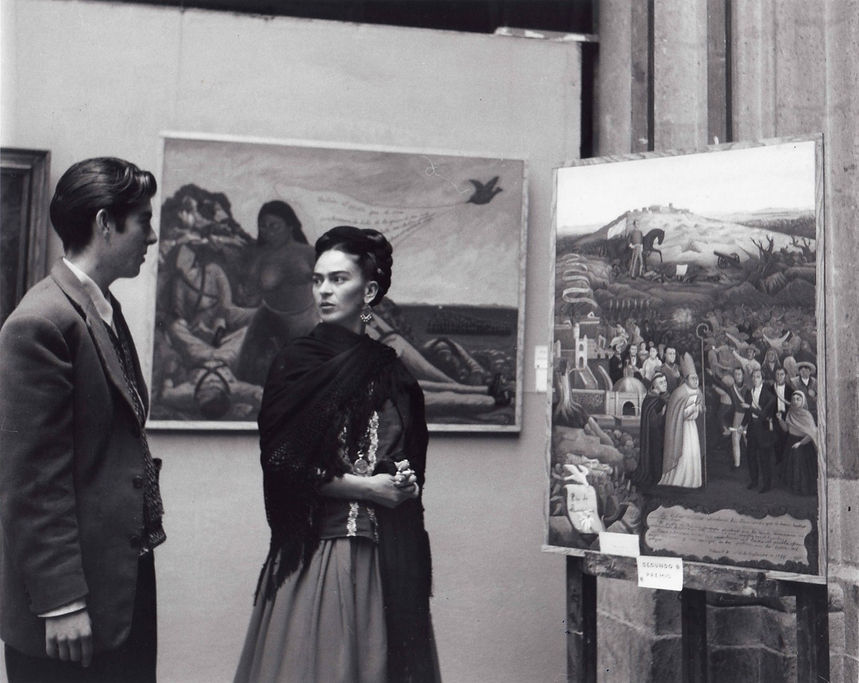
Lola Álvarez Bravo
Frida Kahlo

Lola Álvarez Bravo
Frida Kahlo

Lola Álvarez Bravo
Frida Kahlo

Lola Álvarez Bravo
Frida Kahlo

Lola Álvarez Bravo
Frida Kahlo

Lola Álvarez Bravo
Frida Kahlo

Lola Álvarez Bravo
Frida Kahlo

Lola Álvarez Bravo
Frida Kahlo

Lola Álvarez Bravo
Frida Kahlo

Lola Álvarez Bravo
Frida Kahlo

Lola Álvarez Bravo
Frida Kahlo

Lola Álvarez Bravo
Diego Rivera
Leonor Fini
1907 – 1996

Dora Maar. Portrait Leonor Fini.

Leonor Fini. Margot Fonteyn and Friend-Leonor Fini
Leonor Fini
(30 August 1907 – 18 January 1996) was an Argentinian-born Italian surrealist painter, designer, illustrator, and author, known for her depictions of powerful and erotic women.
Fini had no formal artistic training, yet she was familiar with the traditional Renaissance and Mannerist styles encountered during her upbringing in Italy. When she was 17, she had a painting exhibited in a gallery in Trieste and received a commission to paint portraits from dignitaries in Milan, where she had her first one-woman show at the Galerie Barbaroux in 1929.
Her first major exhibition was in 1936 in New York at Julian Levy Gallery. Fini was part of a pre-war generation of Parisian artists, and very important in the Surrealist movement though she is often overlooked in favour of her male contemporaries. Fini never officially joined the Surrealist movement though she did show her work alongside other Surrealist artists. In 1943, Fini was included in Peggy Guggenheim's show Exhibition by 31 Women at the Art of This Century gallery in New York.
In 1949 Frederick Ashton choreographed a ballet conceptualized by Fini, Le Rêve de Leonor ("Leonor's Dream") with music by Benjamin Britten. In London, she exhibited at the Kaplan gallery in 1960 and at the Hanover Gallery in 1967. In the summer of 1986 there was a retrospective at the Musée du Luxembourg in Paris that drew in more than 5,000 people a day. It featured over 260 works in a variety of media. A tribute to the many artistic and creative avenues that her career took throughout her lifetime, the exhibition included watercolours and drawings, theatre/costume designs, paintings and masks. Many of Fini's paintings featured women in positions of power or in very sexualised contexts. An example of this is the painting La Bout du Monde where a female figure is submerged in water up to her breasts with human and animal skulls surrounding her. Madonna used the imagery in her video, "Bedtime Story" in 1994. In the spring of 1987, Fini had an exhibition at London's Editions Graphique's gallery.
Her work didn't always fit the typical popular conception of surrealism, sometimes exploring the 'femme fatale' without any particularly ambiguous or monstrous imagery. Nonetheless it often included symbols like sphinxes, werewolves, and witches. Most of the characters in her art were female or androgynous. "The terrifying female monster and the adoring girl-child are socially constructed stereotypes continued by the male surrealists. In order to promote the liberated, autonomous woman, Fini purposefully destabilized these stereotypes by combining each construct in a single figure, so that sphinxes can be protective and creative while girls can be sensual and aggressive." Fini was also featured in an exhibition entitled "Women, Surrealism, and Self-representation" at the San Francisco Modern Museum of Art in 1999.

Portrait Leonor Fini.

Leonor Fini. La Gouvernante

Leonor Fini. From One Day to the Next
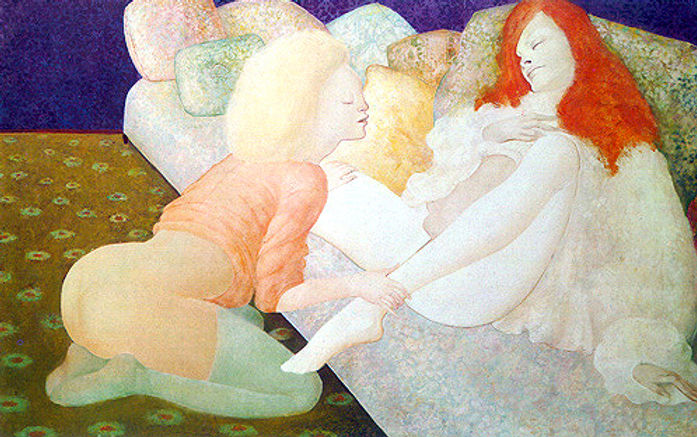
Leonor Fini. L'entre duex

Leonor Fini. Rasch, Rasch, Rasch Meine Puppen Warten

Leonor Fini. Retour de Voyage I
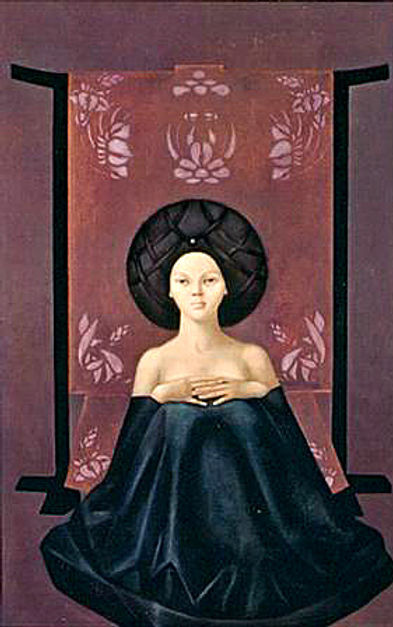
Leonor Fini. Retour de Voyage II

Leonor Fini. L'Entracte de l'apotheose

Leonor Fini. La Prison de Zigrifine

Leonor Fini. Armine

Leonor Fini. Sultanes et Magiciennes: Le Coffre

Leonor Fini. Sultanes et Magiciennes: Jeux de Dames
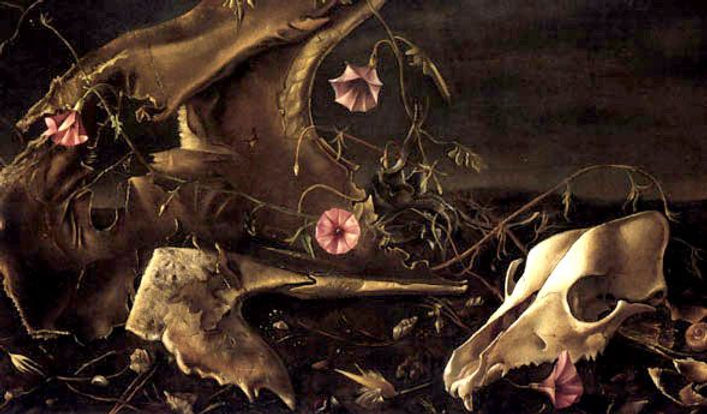
Leonor Fini. Les Deux Cranes

Leonor Fini. The End of the World

Leonor Fini. La Léçon d’anatomie
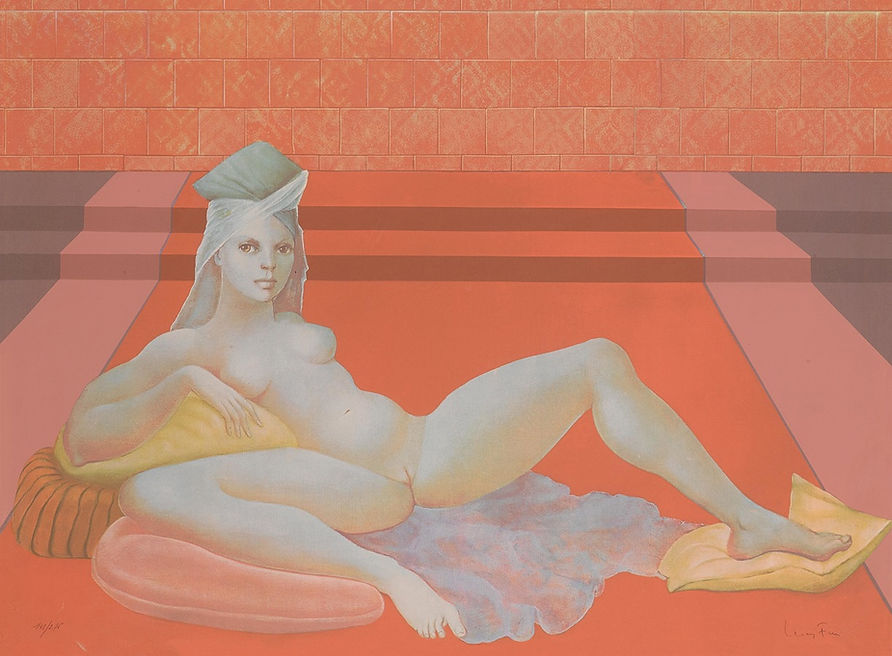
Leonor Fini. La Reine Pétrifiée, from Sultanes et Magiciennes des mille et une nuits

Obscure rencontre (Deux figures surréalistes)
Léonor Fini
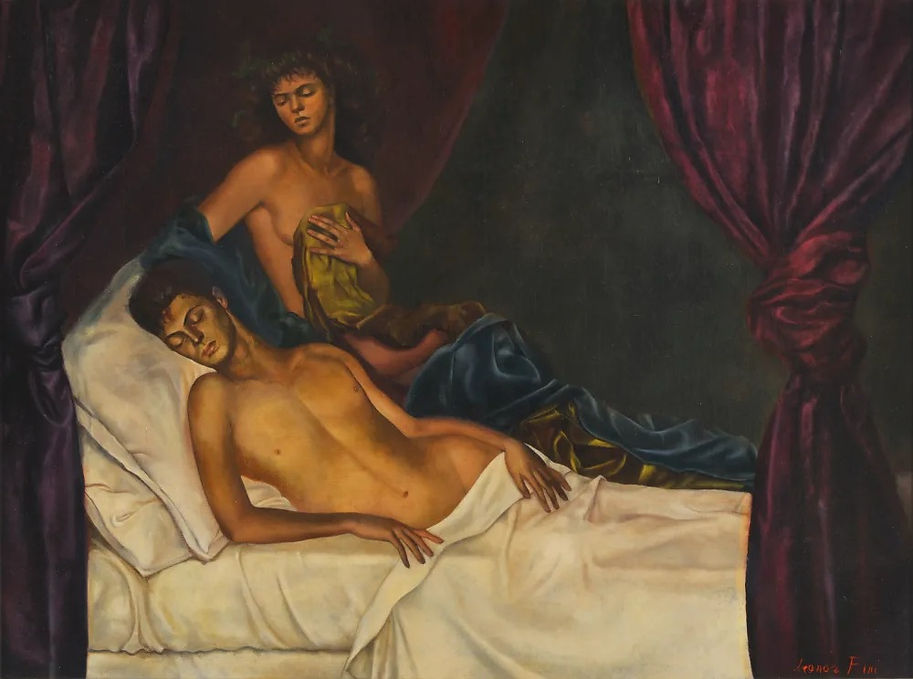
L’Alcove (Self-portrait with Nico Papatakis) (1941)
Léonor Fini

Leonor Fini. Les Aveugles

Leonor Fini. Sphinx
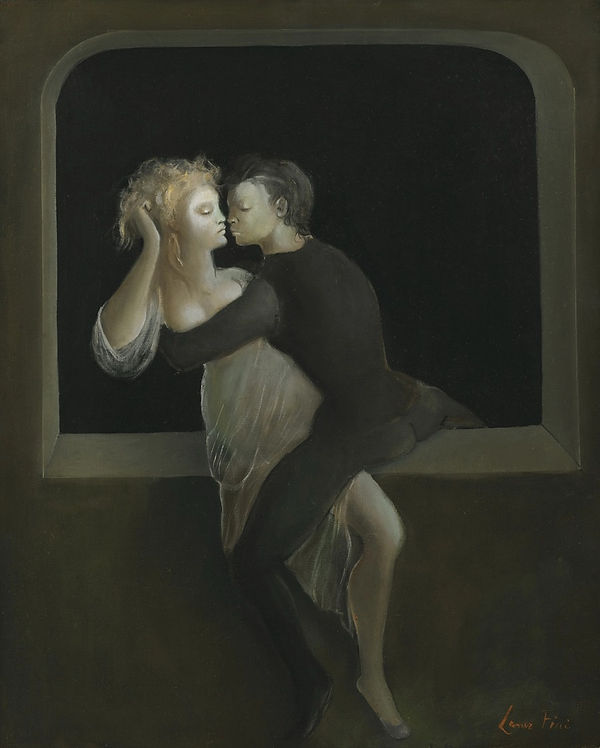
Leonor Fini. Le Balcon – la tragédie de Roméo et Juliette

Leonor Fini. Dans la tour

Leonor Fini. Figures On A Terrace (1938)

Leonor Fini. Gardienne des phoenix

Leonor Fini. Homme noir et femme singe

Leonor Fini. La sorcière (1935-1936)

Leonor Fini. La Belle

Leonor Fini. Autoportrait avec Stanislao Lepri
Remedios Varo
1908 - 1963
Remedios Varo (1908 - 1963) was a Spanish-Mexican surrealist painter. She was born in Anglés Cataluna, Spain in 1908 and died from a heart-attack in Mexico City in 1963. During the Spanish Civil War she fled to Paris where she was largely influenced by the surrealist movement. She met in Barcelona the french surrealist poet Benjamin Péret and became his wife. She was forced into exile from Paris during the Nazi occupation of France and moved to Mexico City at the end of 1941. She initially considered Mexico a temporary haven, but would remain in Latin America for the rest of her life.
In Mexico she met native artists such as Frida Kahlo and Diego Rivera. However, her strongest ties would be to other exiles and expatriates, and especially her extraordinary friendship with the English painter Leonora Carrington. Her last major relationship would be with Walter Gruen, an Austrian who had endured concentration camps before escaping Europe. Gruen believed fiercely in Varo, and gave her the support that allowed her to fully concentrate on her painting.
After 1949 Varo developed into her mature and remarkable style, which remains beautifully enigmatic and instantly recognizable. She often worked in oil on masonite panels she prepared herself. Although her colors have the blended resonance of the oil medium, her brushwork often involved many fine strokes of paint laid closely together - a technique more reminiscent of egg tempera. She died at the height of her career.
Her work continues to achieve successful retrospectives at major sites in Mexico and the United States.

Surreal Portrait of Remedios Varo, wearing a mask made by Leonora Carrington photographed by Kati Horna

Remedios Varo.

Remedios Varo.

Remedios Varo.Tiforal

Remedios Varo. Transito en espiral

Remedios Varo. Armonia

Remedios Varo. Banqueros en accion

Remedios Varo. Nacer de nuevo

Remedios Varo. Mimetismo
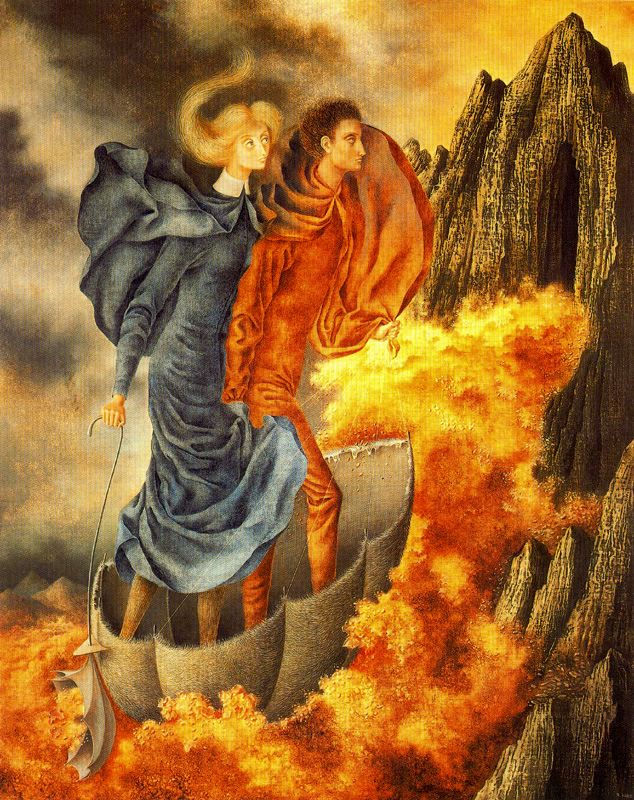
Remedios Varo. La huida

Remedios Varo. Tailleur pour dames

Remedios Varo. Taxi acuático

Remedios Varo. Visita inesperada

Remedios Varo. Vuelo mágico

Remedios Varo. Exploración de las fuentes del río Orinoco

Remedios Varo. Aurora

Remedios Varo. Bordando el manto terrestre

Remedios Varo. Creación de las aves
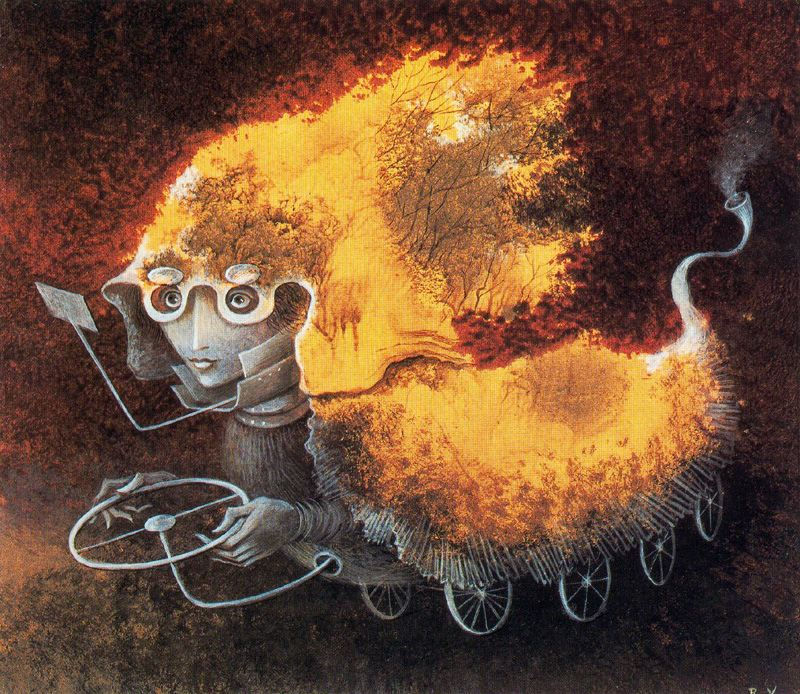
Remedios Varo. As del volante

Remedios Varo. El juglar

Remedios Varo. El mundo

Remedios Varo. El rico
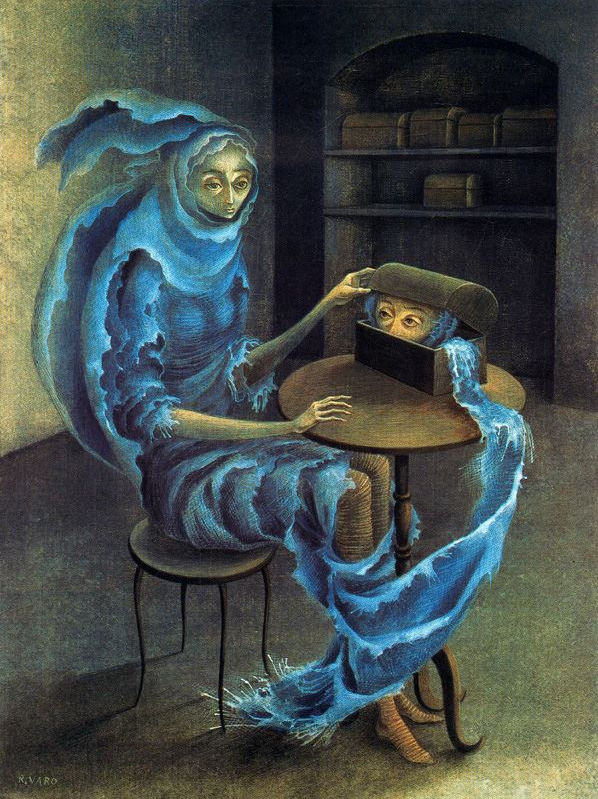
Remedios Varo. Encuentro

Remedios Varo. Hacia Acuario

Remedios Varo. Fenómeno de ingravidez
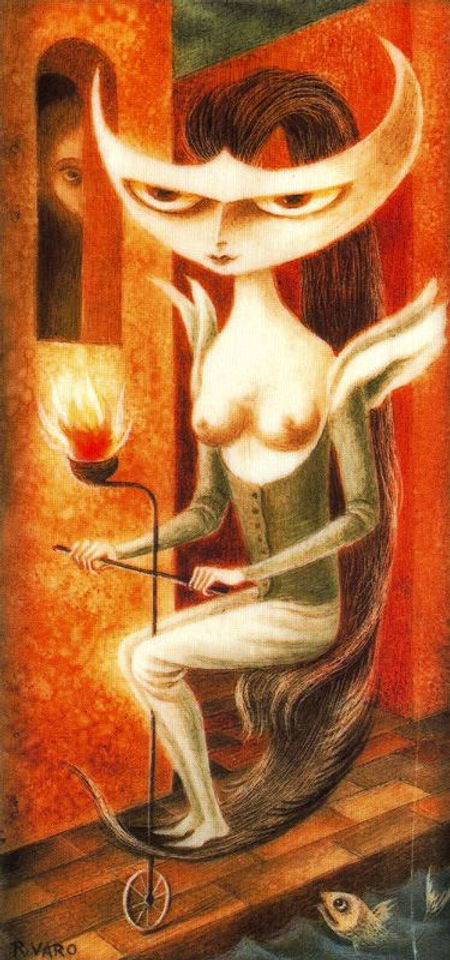
Remedios Varo. Lady Godiva
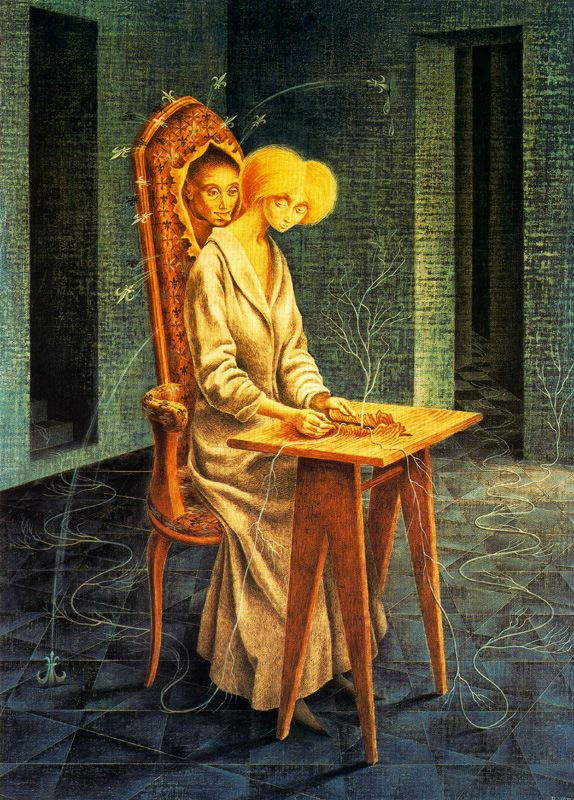
Remedios Varo. Presencia inquietante

Remedios Varo. Invocación
Wilhelm Freddie
1909 – 1995
Wilhelm Freddie
Wilhelm Freddie, born Christian Frederik Wilhelm Carlsen (7 February 1909 – 26 October 1995) was a Danish painter, sculptor and filmmaker. Initially working along a somewhat abstract line, he soon turned towards a more realistic surrealism, only to later return to abstract art. Some of his works were highly controversial and considered pornographic at their time, resulting in confiscation of the works and his imprisonment though his artistic merits were later recognized.
Some of Freddie's works criticized Nazism and fascism, like the 1936 paintings Meditation on the Anti-Nazi Love and Phénomène psychophotographique, and his 1938 exhibition Surreal-Sex.
In 1949 and 1950, Freddie directed two short films, The Definite Rejection of a Request for a Kiss (Det definitive afslag på anmodningen om et kys) and Eaten Horizons (Spiste horisonter).

Wilhelm Freddie

Wilhelm Freddie
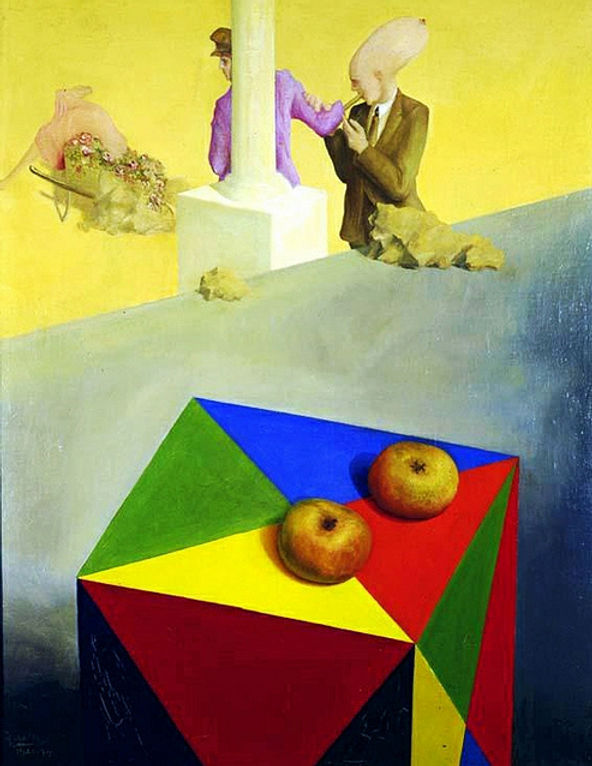
Wilhelm Freddie

Wilhelm Freddie
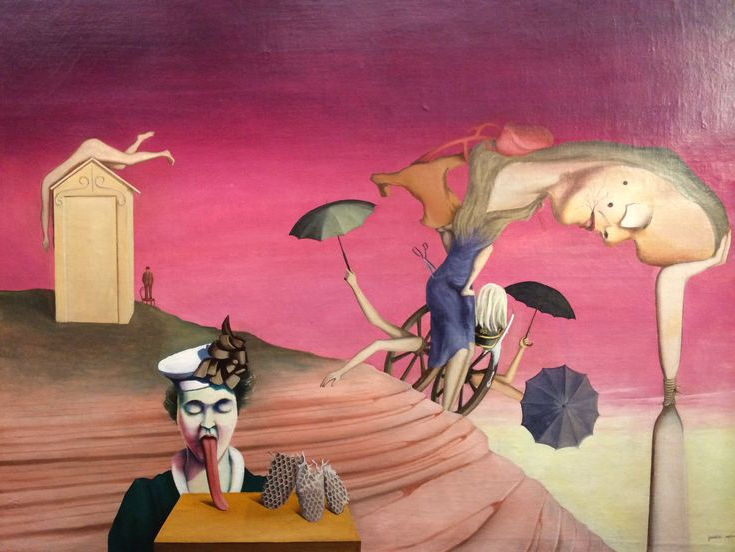
Wilhelm Freddie

Wilhelm Freddie

Wilhelm Freddie

Wilhelm Freddie

Wilhelm Freddie

Wilhelm Freddie

Wilhelm Freddie

Wilhelm Freddie

Wilhelm Freddie

Wilhelm Freddie
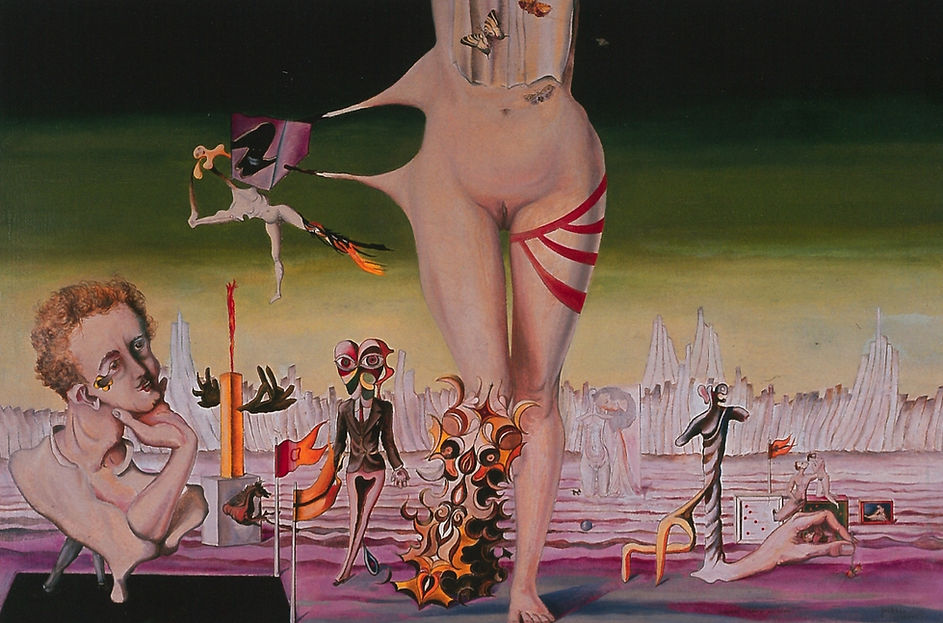
Wilhelm Freddie

Wilhelm Freddie

Wilhelm Freddie

Wilhelm Freddie

Wilhelm Freddie

Wilhelm Freddie

Wilhelm Freddie

Wilhelm Freddie

Wilhelm Freddie
Dorothea Tanning
1910 – 2012
Dorothea Tanning
Dorothea Margaret Tanning (25 August 1910 – 31 January 2012) was an American painter, printmaker, sculptor, writer, and poet. Her early work was influenced by Surrealism.
Dorothea Tanning was born and raised in Galesburg, Illinois. She was the second of three daughters to Andrew Peter Tanning (born Andreas Peter Georg Thaning; 1875–1943) and Amanda Marie Hansen (1879–1967), who named her for her maternal grandmother. After graduating from Galesburg Public High School in 1926, Tanning worked in the Galesburg Public Library (1927) and attended Knox College (1928–30). After two years of college she quit to pursue an artistic career, moving first to Chicago in 1930 and then to New York in 1935, where she supported herself as a commercial artist while working on her own painting. Tanning was married briefly to the writer Homer Shannon in 1941, after an eight-year relationship.
In New York, Tanning discovered Surrealism at the Museum of Modern Art's seminal 1936 exhibition, Fantastic Art, Dada and Surrealism. In 1941, impressed by her creativity and talent in illustrating fashion advertisements, the art director at Macy’s department store introduced her to the gallery owner Julien Levy, who immediately offered to show her work. (Tanning would also become good friends with Levy and his wife, the painter Muriel Streeter, as seen in letters they exchanged in the 1940s.) Levy gave Tanning two solo exhibitions (in 1944 and 1948), and also introduced her to the circle of émigré Surrealists whose work he was showing in his New York gallery, including the German painter Max Ernst.
Tanning first met Ernst at a party in 1942. Later he dropped by her studio to consider her work for inclusion in the 1943 Exhibition by 31 Women at the Art of This Century gallery in New York., which was owned by Peggy Guggenheim, Ernst's wife at the time. As Tanning recounts in her memoirs, he was enchanted by her iconic self-portrait Birthday (1942, Philadelphia Museum of Art). The two played chess, fell in love, and embarked on a life together that took them to Sedona in Arizona, and later to France. They lived in New York for several years before moving to Sedona, where they built a house and hosted visits from many friends crossing the country, including Henri Cartier-Bresson, Lee Miller, Roland Penrose, Yves Tanguy, Kay Sage, Pavel Tchelitchew, George Balanchine, and Dylan Thomas. Tanning and Ernst were married in 1946 in a double wedding with Man Ray and Juliet Browner in Hollywood and they were married for 30 years.
In 1949, Tanning and Ernst relocated to France, where they divided their time between Paris and Touraine, returning to Sedona for intervals through the early and mid 1950s. They lived in Paris and later Provence until Ernst's death in 1976 (he had suffered a stroke a year earlier), after which Tanning returned to New York. She continued to create studio art in the 1980s, then turned her attention to her writing and poetry in the 1990s and 2000s, working and publishing until the end of her life. Tanning died on 31 January 2012, at her Manhattan home at age 101.

Max Ernst and Dorothea Tanning.

Max Ernst and Dorothea Tanning.
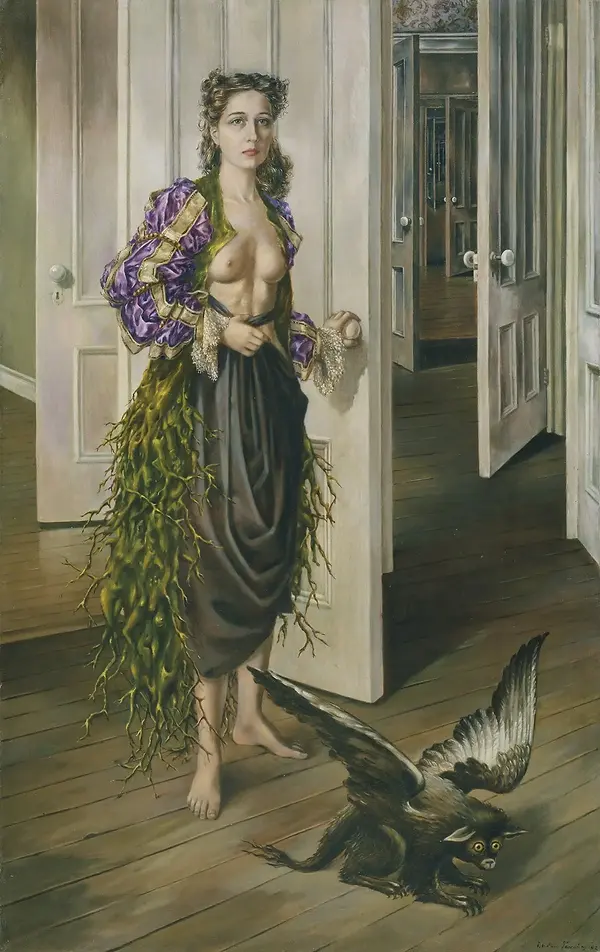
Birthday
Dorothea Tanning
1942

Max in a blue boat
Dorothea Tanning

Dorothea Tanning. A Little Night Music

Dorothea Tanning. The Temptation Of Saint Anthony
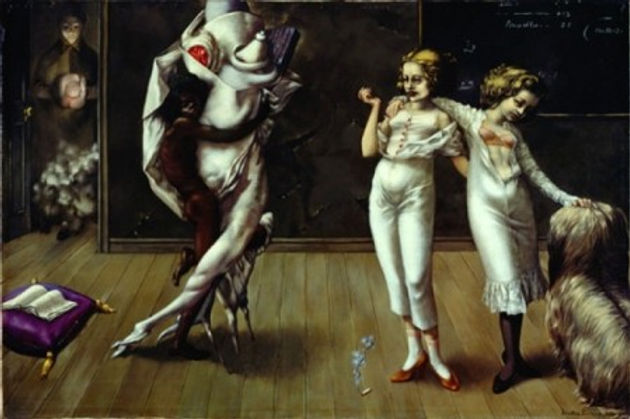
Dorothea Tanning. Interior With Sudden Joy

Dorothea Tanning. Some Roses And Their Phantoms

Dorothea Tanning. The Guest Room

Dorothea Tanning. A Mi-Voix

Dorothea Tanning. Nue couchée
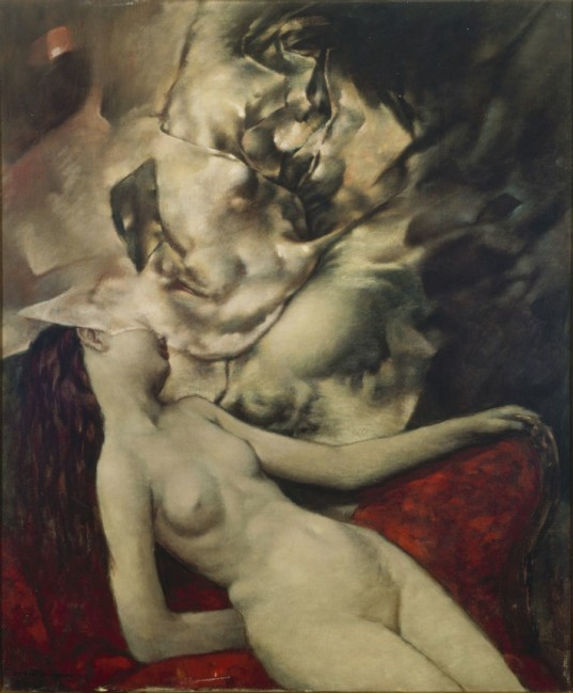
Dorothea Tanning. Nue endormie (Sleeping Nude)
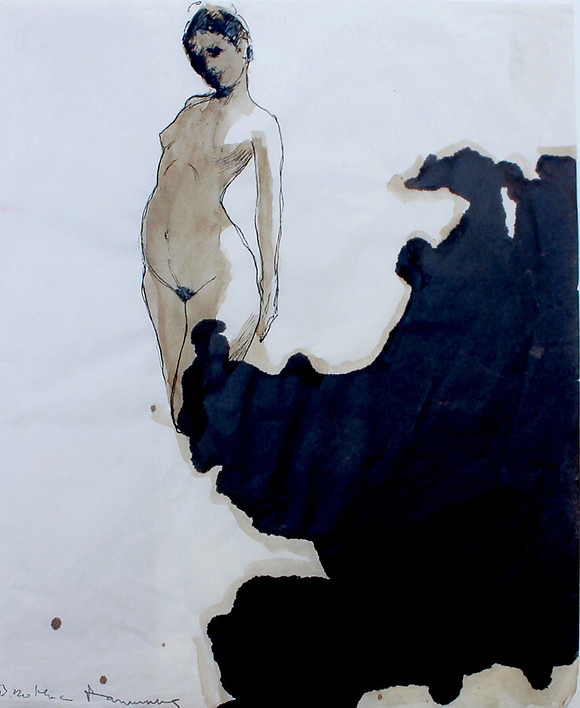
Dorothea Tanning. Nude
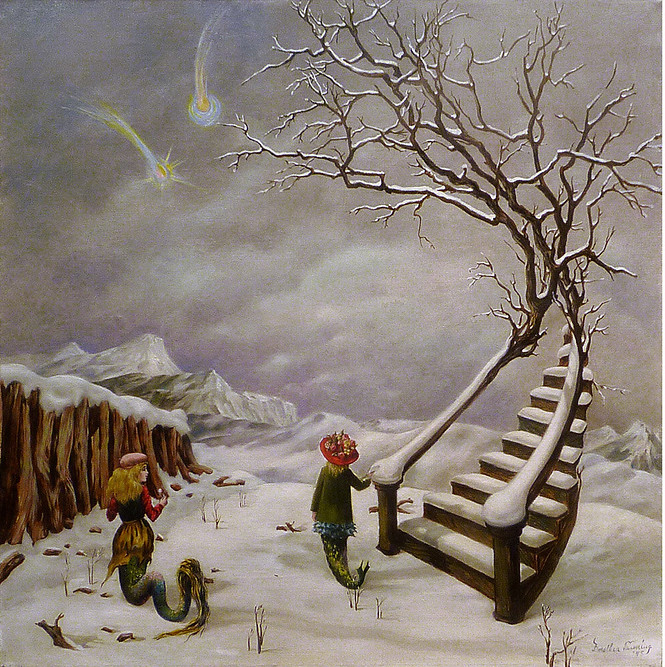
Dorothea Tanning. The Truth About Comets

Dorothea Tanning. On Time, Off Time

Dorothea Tanning. La Truite au bleu

Dorothea Tanning. Les Trois Garces

Dorothea Tanning. To The Rescue

Dorothea Tanning. Insomnies
Colin Middleton
1910 – 1983
Colin Middleton
(29 January 1910 – 23 December 1983) was a Northern Irish landscape artist, figure painter, and surrealist. Middleton's prolific output in an eclectic variety of modernist styles is characterised by an intense inner vision, augmented by his lifelong interest in documenting the lives of ordinary people. He has been described as ‘Ireland's greatest surrealist.
Middleton was born in 1910 in Victoria Gardens in north Belfast, the only child of damask designer Charles Middleton. He attended the nearby Belfast Royal Academy until 1927 and then continued his studies with night classes at Belfast School of Art where he trained in design under the Cornish artist Newton Penprase. However Middleton found the college too traditional in outlook, as his first influence, his Father, had been a follower of European Modernism, particularly the Impressionists.
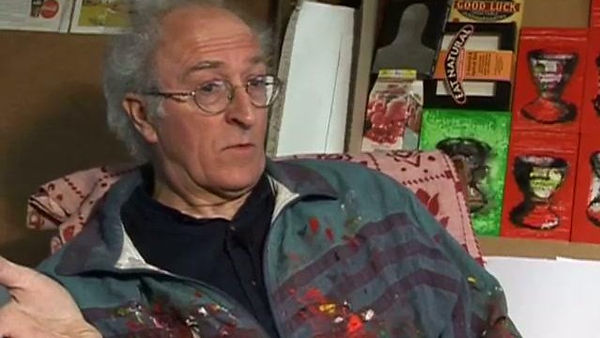
COLIN MIDDLETON

COLIN MIDDLETON

COLIN MIDDLETON

COLIN MIDDLETON

COLIN MIDDLETON

COLIN MIDDLETON
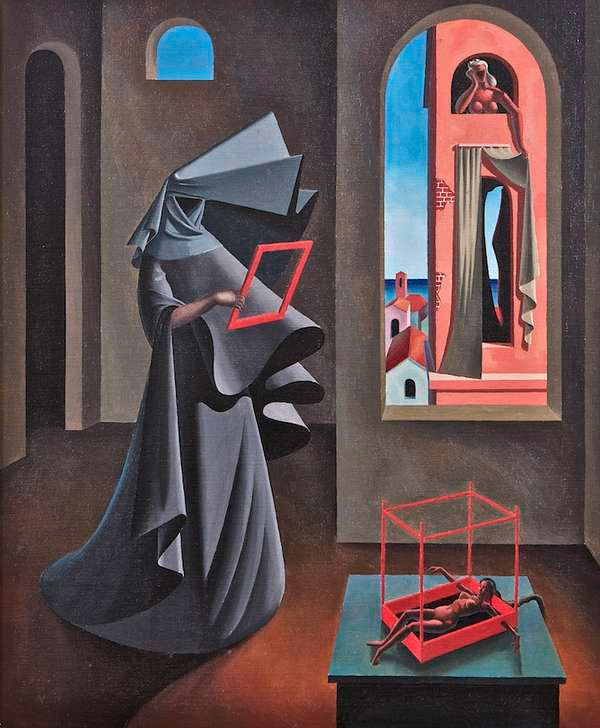
COLIN MIDDLETON

COLIN MIDDLETON

COLIN MIDDLETON

COLIN MIDDLETON

COLIN MIDDLETON

COLIN MIDDLETON
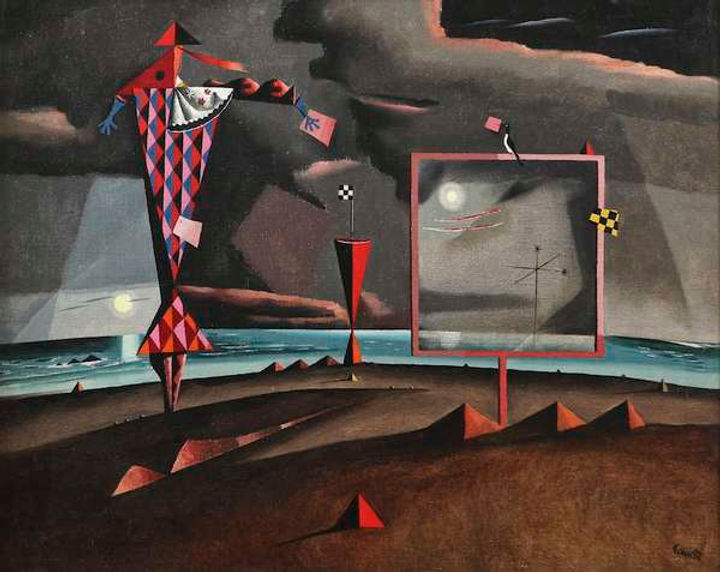
COLIN MIDDLETON

COLIN MIDDLETON

COLIN MIDDLETON

COLIN MIDDLETON

COLIN MIDDLETON
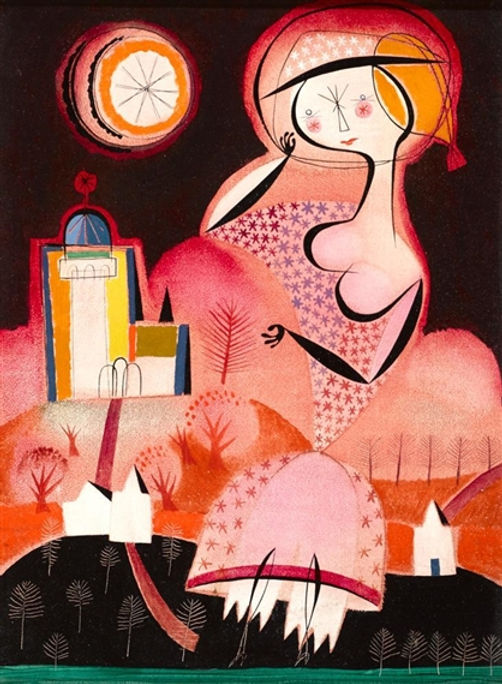
COLIN MIDDLETON

COLIN MIDDLETON

COLIN MIDDLETON

COLIN MIDDLETON

COLIN MIDDLETON

COLIN MIDDLETON

COLIN MIDDLETON

COLIN MIDDLETON